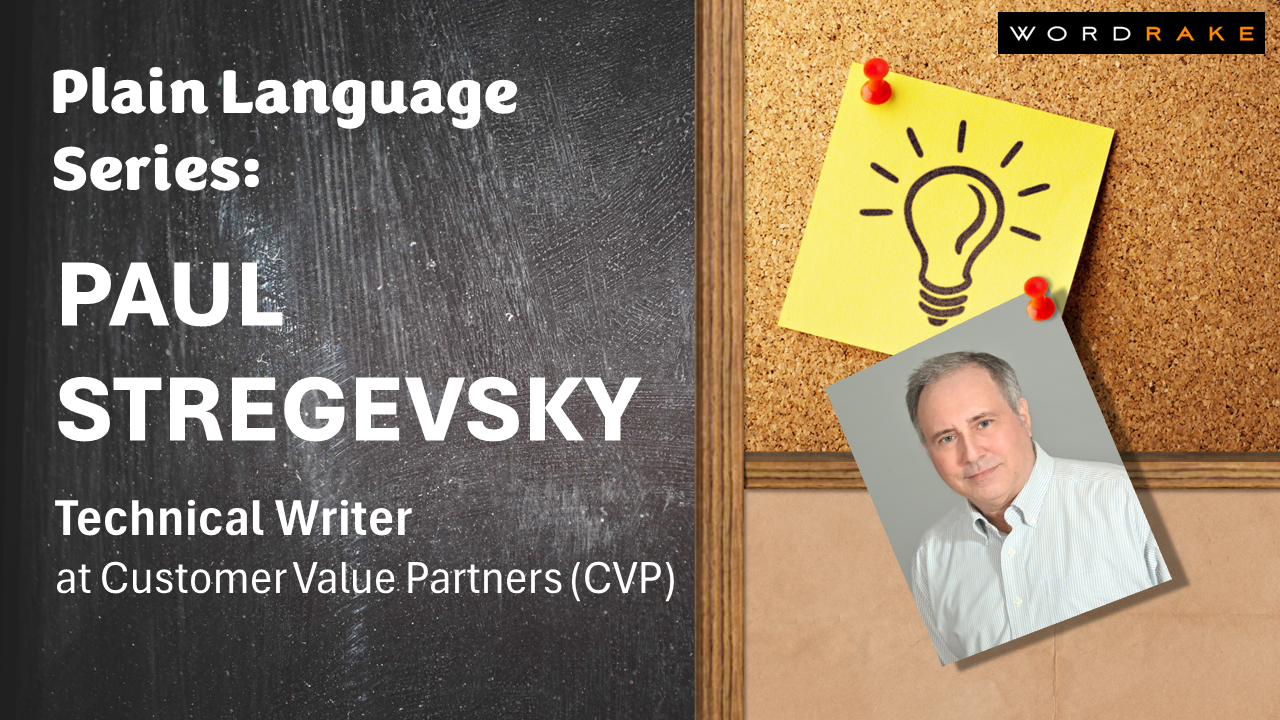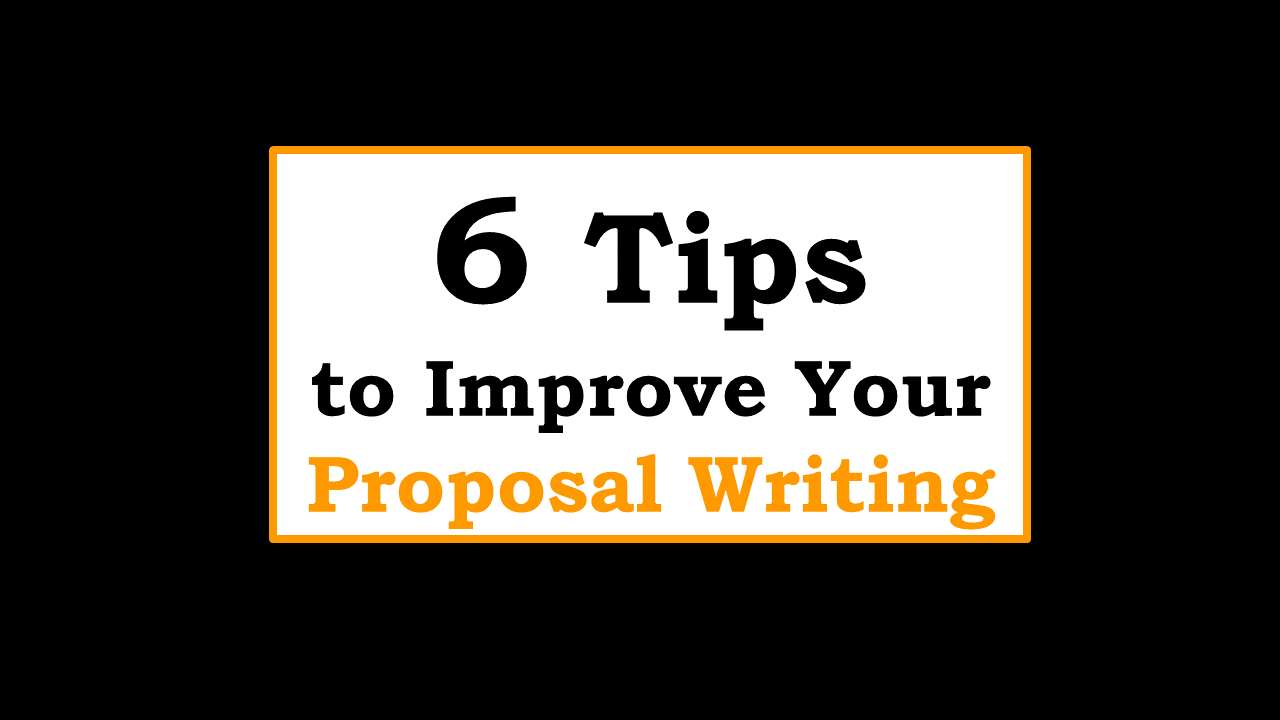Nothing is more unpleasant to read than a long, humorless, convoluted technical document filled with jargon and run on sentences. For technical writer Paul Stregevsky, plain language is not simply a matter of using short words and phrases. Paul advocates human writing, creating documents that engage and inform the reader. After years of fighting for his reader's right to clear, memorable communication, he shares his journey with us.
Why did you pursue a career in technical writing?
My fifth-grade teacher asked the class, “What is democracy?” My classmates began, “It’s when—” or “It’s people—”. Mr. Griffin cut them off, “It’s not a when”; “It’s not people.” I began, “A form of government in which—” “Hear that, class? A form of gov-ern-ment …” I could explain things.
In high school, teachers would answer a question with a long, misguided reply, then ask, “Did that answer your question?” The kid would mutter, “I … think … so.” Clearly, it didn’t. I understood the question’s true meaning. So I’d paraphrase, “What they want to know is ___.” And I was always right.
In college, I majored in English Language under Joseph M. Williams, who would soon show, in Style: Ten Lessons in Clarity and Grace, how clear prose arises from careful syntax. I decided to become a lexicographer. I attended a dictionary symposium, where I met my idols, including the composer of my favorite definition, “point: space without extension.”
But lexicography required a doctorate; forget that. When I graduated, I interned at a jet-engine maker, copyediting and style-editing research reports. The job suited me. My career was launched.
What is the UBER writing style? Why did you create it?
I was working in Homeland Security’s Science and Technology Directorate, writing articles and editing technical reports aimed at lay readers, newsrooms, and Congressional staffers. I used analogy, imagery, humor, and cultural references. Some gatekeepers tried to rewrite my drafts as dry press releases. They held many myths about professional writing. To dispel these myths, I created a presentation, Technical Writing That’s UBER Fantastic—Understood, Believed, Enjoyed, and Remembered. I created it on the taxpayer’s dime; anyone can use it.
How can writers apply UBER standards when writing technical and business content?
Aim for what Peter Elbow calls vernacular eloquence and what stylist Bryan A. Garner calls relaxed sincerity—writing that’s conversational yet unmistakably written. That’s what you’ll find in Consumer Reports. More than 40 years ago, CR was writing about air conditioners and ovens that let you choose your level of coolth or doneness. In one car review, they wrote, “Ours came with the $34 ‘Jumbo Tank,’ which holds another 1.3 gallons. Big deal.” Well, back then, technical writing that was laid back was a big deal.
What is most important about writing style?
Authenticity, because readers crave connection and won’t connect with corporate speak; and flow, because it’s the connective tissue that allows readers to follow your thread.
Who makes a better science writer: a professional scientist or a professional writer?
Out of curiosity, I once reviewed the first four years of the 2003–2012 anthology The Best American Science Writing of [Year]. How many articles had been written by someone who’d never earned a science degree? Only half. I was surprised: to write about science, you don’t need to be able to do science; you just need to be conversant in science. Frankly, I was more surprised that fully half had been written by scientists. Writing that well is a rare, hard-won skill.
Why is it vital for a technical writer to use human language?
Readers deserve human writing; younger generations are coming to expect it. And let’s face it: most readers multitask. To keep them reading, you need to help them connect.
As a tech writer, I deal with abstract topics—topics that, as narrative journalist Mark Kramer would say, carry low emotional valence. Let’s face it: Normal people aren’t moved when they read an instruction manual or a strategic plan. I once edited a strategic plan to modernize an agency’s IT infrastructure to handle town-hall meetings with two-way video. Of course, IT infrastructure has no emotional appeal. So I changed the heading “Introduction” to “Building a foundation for connecting people.” The writer—a network engineer—was pissed. But the agency lead loved it; he walked down the hall handing out bound copies.
How is writing humanly connected to plain language? How do they differ?
It depends on what you mean by plain language. If you mean, “language that uses contractions and forgoes highfalutin words,” they’re intimately connected. But if you mean, “language that scores well on readability tests,” then no. Sure, if you simplify your syntax, your readability might score higher. But at what cost? Without the semantic cues afforded by complex sentences—without analytical writing—readers might struggle to figure out your point.
I use plain writing sparingly. In 1986, I asked a professional society, “How do I cancel my membership?” They replied, “Send us a letter.” So I wrote, “Dear [Society Name]: I quit. Says, Paul.”
I’ve heard the mantra, “Plain writing needn’t bore.” But it will bore if you write about a low-valence topic using only plain writing. I’m a huge fan of the Microsoft brand voice, “Above all, simple and human.” Nowhere does Microsoft describe that voice as plain.
How do you balance the need to write honestly and humanly with the need to sound professional?
For the seven years when I wrote proposals, I lived in Bizarro World: People who had never studied writing or written for a living deemed my writing unprofessional.
When people call your tone “unprofessional,” they’re usually referring to your choice of words. So use their words if you must. But arrange their words into what Erin Lebacqz calls high-value sentences and paragraphs. In this way, you can simulate vernacular English without using vernacular words. Use bullet lists. Break up long paragraphs. Add quotations. Vary your sentences’ structure and length. Occasionally add a sentence that’s disarmingly short. Like this. Cast ideas as questions (“What if …?”). Punctuate more freely to signal your meaning.
In your quest for more human language in professional and technical writing for the government, what pushback have you received?
Nowadays, none; my employer, CVP, gets it. So does my client, the U.S. Department of Labor. I waited 40 years for this. Thirty years ago, I was writing technical reports for a federal agency. My new boss found my use of imagery, analogy, and terms like plug-and-play “cutesy.” She pushed back; I pushed back. I was canned.
Most pushback came during my six years at Homeland Security. For one report, I had added sentence modifiers like notably and inversely. I was instructed to remove them all and “let the facts speak for themselves.” Facts don’t speak.
My Homeland gatekeepers didn’t get that science writing must be more relaxed than scientific writing. One time, I wrote about rehabilitating terrorists. I used the same tone that two major newspapers had used. The project manager—a social scientist—marched to my boss’s office and demanded my head.
Another time, I wrote about a pair of bomb-disposal robots: one lanky, one squat. I likened them to C-3PO and R2-D2 of Star Wars. The lead investigator—a bomb squadder—called my draft “amateurish, silly, and unprofessional.” If we published it, he warned, he’d never work with Homeland again.
Six articles were pulled because I had described a benignly named project in a way that left no doubt that it raised legitimate questions about privacy or profiling in government projects. One was about an all-seeing camera for surveilling people in an airport terminal. My editor wanted me to say it would be used to locate lost kids. Lost kids? I had likened the camera to the Eye of Sauron!
Look, no one wants their project killed. But that doesn’t give them the right to obfuscate or lie. I stand by my Homeland writing choices. If you try to write humanly for government and no one’s pushing back, you’re not trying hard enough.
What would you advise someone looking to make their writing sound more natural?
Read books about writing; include books by contrarians. Literary renegades like Bryan A. Garner, Richard A. Lanham, and Steven Pinker have exposed faux rules that have infected writers’ minds for generations. “Favor the active voice” is a common and constraining example. As I argued in a LinkedIn article, the passive voice can energize your writing by placing a salient verb last, where it lands a punch.
There are no solutions; only tradeoffs. No single writing approach works best. Read science articles to see how literary devices like imagery and simile can help readers grasp difficult concepts. Note how younger writers write; that’s how you’ll write in 10 years, so get with the program. Note how marketing writers write; you won’t have to look far. Follow LinkedIn writing experts who have a unique voice. I follow about ten.
Why did you start writing LinkedIn articles on writing?
Several writing luminaries were sharing their expertise on LinkedIn. But most were self-employed. They’d write, “Use this time-saving macro,” or “Use two-part titles,” or “Begin with a story.” As a salaried employee writing for the government, I wasn’t always free to follow their advice. I’m not even free to install WordRake.
I knew I wasn’t alone. Salaried writers everywhere struggle to color inside the lines while giving readers the clear, human writing they deserve. I saw an unmet need to help salaried writers thread the needle and navigate the realpolitik of their trade.
When you consider where writing is headed, are you an optimist or a pessimist?
An optimist. Thanks to the internet, human writing is on the rise. Boomers and Gen Xers are retiring, taking with them an outmoded bias against fresh, vernacular writing. As Millennials and Zoomers become gatekeepers, they’ll not only tolerate human writing: they’ll demand it.
What would you advise someone who wants to become a technical writer?
“Don’t.” I’m serious. Here are some reasons:
- Your boss won’t be a writer and won’t get your choices.
- The field is full of fakers who will lower your perceived value.
- AI will reduce the need for technical writers.
- In a downturn, you’ll be among the first to be let go.
Looking back, I wish I’d become a materials scientist or materials engineer; my Myers–Briggs personality type is INTJ, Scientist/Researcher. But I wasn’t good enough; in high school, I couldn’t grasp molarity or inductance. Today, you can find anything explained online. If you want to be a scientist or engineer, don’t let a subpar teacher or textbook stop you.
But if you’re determined to become a technical writer, understand that your job will change. So embrace new modalities, new ways to collaborate, and new tools, including AI. You can complete a master’s in Technical Communication, as I did long ago. But a master’s degree won’t bring you job security. It won’t bring you esteem.
And it absolutely won’t make you a better writer. Practice, reading, and empathy will.
About Paul Stregevsky
Paul Stregevsky is a technical writer with a passion for clear communication through human writing. He has spent his career fighting for creative, direct communication from government agencies. You can find him on LinkedIn, and check out his personal essays on his website.
About WordRake and International Plain Language Day
Plain Language experts Cheryl Stephens and Kate Harrison Whiteside created International Plain Language Day on October 13, 2011 to celebrate the first anniversary of the signing of the Plain Language Act in the United States. Since then, plain language enthusiasts take time each year to celebrate the gains the movement has made.
In October 2022, WordRake celebrated Plain Language Day by releasing their new Simplicity editing mode to help comply with plain language laws. As firm believers in the importance of clear communication, WordRake celebrates October 13th by highlighting experts and leaders in the plain language field. To see how WordRake can help you simplify your writing, take a 7-day free trial today!







